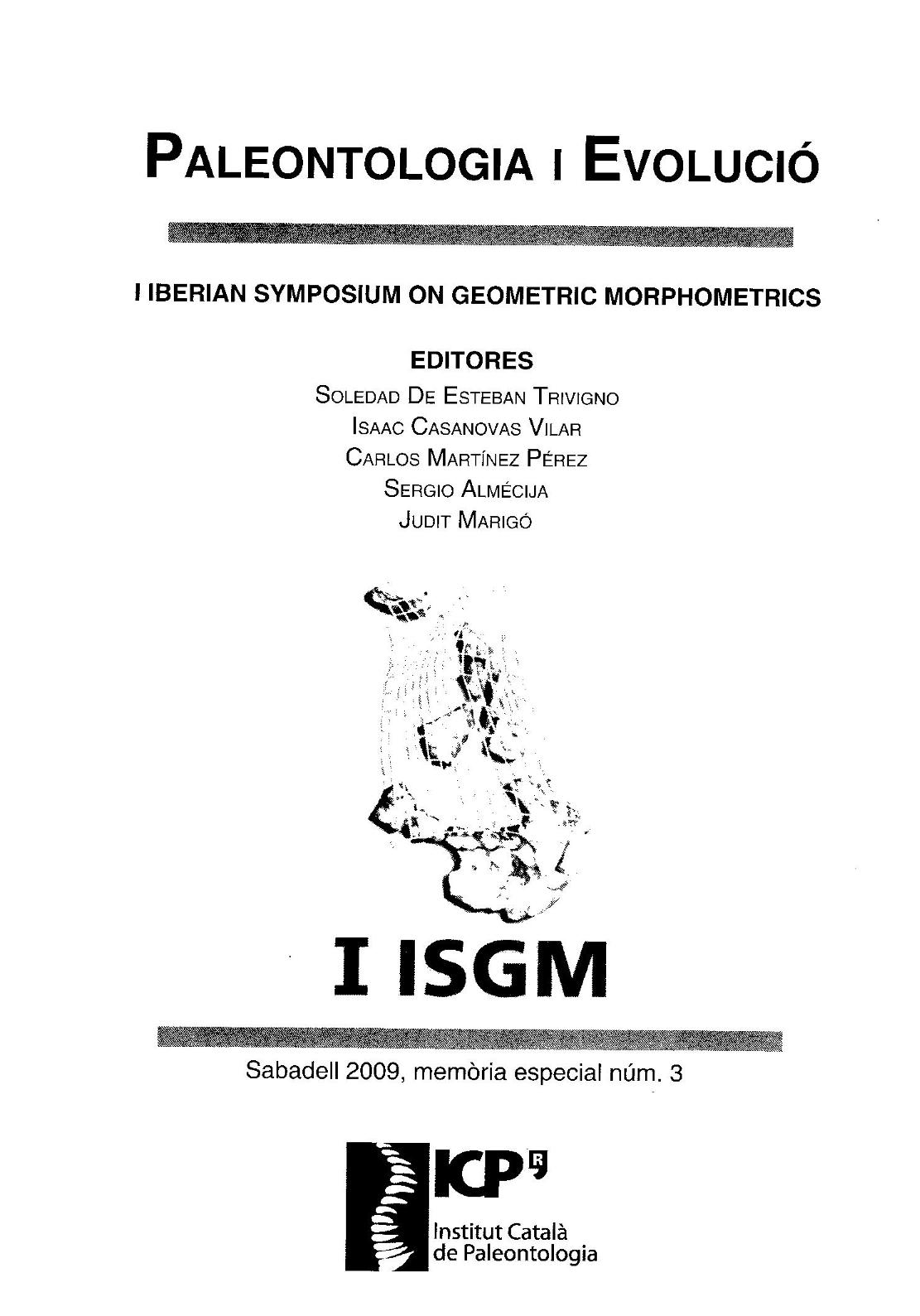Mostrar el registro sencillo del ítem
dc.contributor.author
Williner, Verónica

dc.contributor.author
Giri, Federico

dc.contributor.author
Collins, Pablo Agustin

dc.date.available
2020-04-22T21:28:58Z
dc.date.issued
2009-12
dc.identifier.citation
Williner, Verónica; Giri, Federico; Collins, Pablo Agustin; Ontogeny of the Mandible of Aegla uruguayana (Decapoda, Anomura): A Geometric Morphometric Approaches; Instituto Catalan de Paleontología; Paleontologia i Evolucio; mem; 3; 12-2009; 117-118
dc.identifier.issn
0211-609X
dc.identifier.uri
http://hdl.handle.net/11336/103375
dc.description.abstract
Within the field of study of the morphology of the crustaceans, Garm & Hoeg (2000) state that one of the most interesting lines of research because of its complexity, is addressed by the analysis of the mouthparts. According to other authors (Cartes, 1993), this complexity has played a fundamental role in the colonization success of this group, showing a remarkable range of food options. Aegla uruguayana is a freshwater anomuran crab that lives in lotic and lenitic freshwater environments of the southern state of Río Grande do Sul in Brazil, and in Uruguay and central and northwest Argentina (Bond-Buckup & Buckup, 1994). This decapod belongs to the unique family of anomurans that colonized freshwater environments (Schmitt, 1942). The aim of this work is to analyze the patterns of the mandible of A. uruguayana on specimens of various sizes to determine if juveniles and adults may have different food options. Digital pictures of all specimens were taken using a Moticam 1000 digital microscope camera. Seven landmarks and three semi-landmarks were recorded on the dorsal view of the cephalothorax through the tpsDig program (Rohlf, 2004). Configurations were superimposed through the Generalized Procrustes Analysis (Rohlf & Slice, 1999) in the tpsRelw program (Rohlf, 2005). Shape variation between samples was first explored through Relative Warp analysis. The mandible shape differed among dietary classes (juveniles, sub-adults and adults). The RW 1 showed that the smooth molar process was the dominant deformations. Moreover the RW2 reflected shape variation in the mandible according to molt cycle stage. The MANCOVA reveled significant differences (P<0, 05) between juveniles, sub-adults and adults. Thus, the temporal proximity to the phenomenon of moulting and the degree of wear of the incisor process could explain this pattern. This could be explained by the low frequency of consumption of plant debris in juveniles compared with adults. Based on these results, it is possible to argue that mechanical destruction of this item would accelerate the erosion of the mandible. Adding to this, the longest period of time between ecdysis events maybe explain these results.
dc.format
application/pdf
dc.language.iso
eng
dc.publisher
Instituto Catalan de Paleontología
dc.rights
info:eu-repo/semantics/openAccess
dc.rights.uri
https://creativecommons.org/licenses/by-nc-sa/2.5/ar/
dc.subject
FRESHWATER ANOMURAN
dc.subject
ONTOGENY
dc.subject
MANDIBLE
dc.subject
GEOMETRIC MORPHOMETRIC
dc.subject.classification
Ecología

dc.subject.classification
Ciencias Biológicas

dc.subject.classification
CIENCIAS NATURALES Y EXACTAS

dc.title
Ontogeny of the Mandible of Aegla uruguayana (Decapoda, Anomura): A Geometric Morphometric Approaches
dc.type
info:eu-repo/semantics/article
dc.type
info:ar-repo/semantics/artículo
dc.type
info:eu-repo/semantics/publishedVersion
dc.date.updated
2020-04-21T15:22:35Z
dc.journal.volume
mem
dc.journal.number
3
dc.journal.pagination
117-118
dc.journal.pais
España

dc.journal.ciudad
Barcelona
dc.description.fil
Fil: Williner, Verónica. Consejo Nacional de Investigaciones Científicas y Técnicas. Centro Científico Tecnológico Conicet - Santa Fe. Instituto Nacional de Limnología. Universidad Nacional del Litoral. Instituto Nacional de Limnología; Argentina
dc.description.fil
Fil: Giri, Federico. Consejo Nacional de Investigaciones Científicas y Técnicas. Centro Científico Tecnológico Conicet - Santa Fe. Instituto Nacional de Limnología. Universidad Nacional del Litoral. Instituto Nacional de Limnología; Argentina
dc.description.fil
Fil: Collins, Pablo Agustin. Consejo Nacional de Investigaciones Científicas y Técnicas. Centro Científico Tecnológico Conicet - Santa Fe. Instituto Nacional de Limnología. Universidad Nacional del Litoral. Instituto Nacional de Limnología; Argentina
dc.journal.title
Paleontologia i Evolucio
dc.relation.alternativeid
info:eu-repo/semantics/altIdentifier/url/https://dialnet.unirioja.es/servlet/revista?codigo=4216
Archivos asociados
